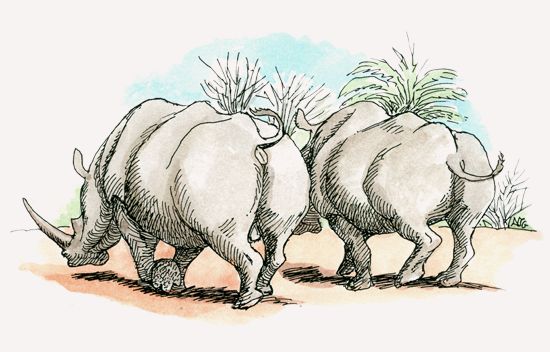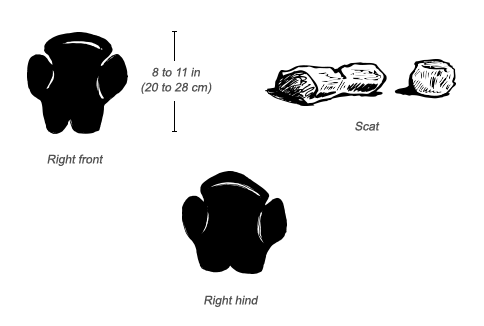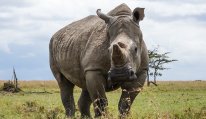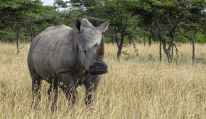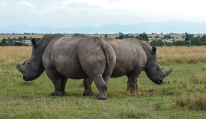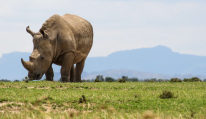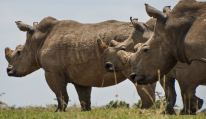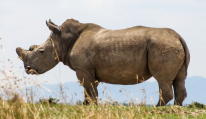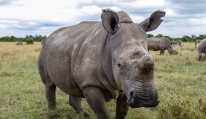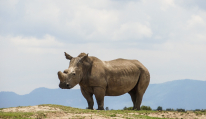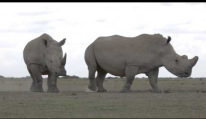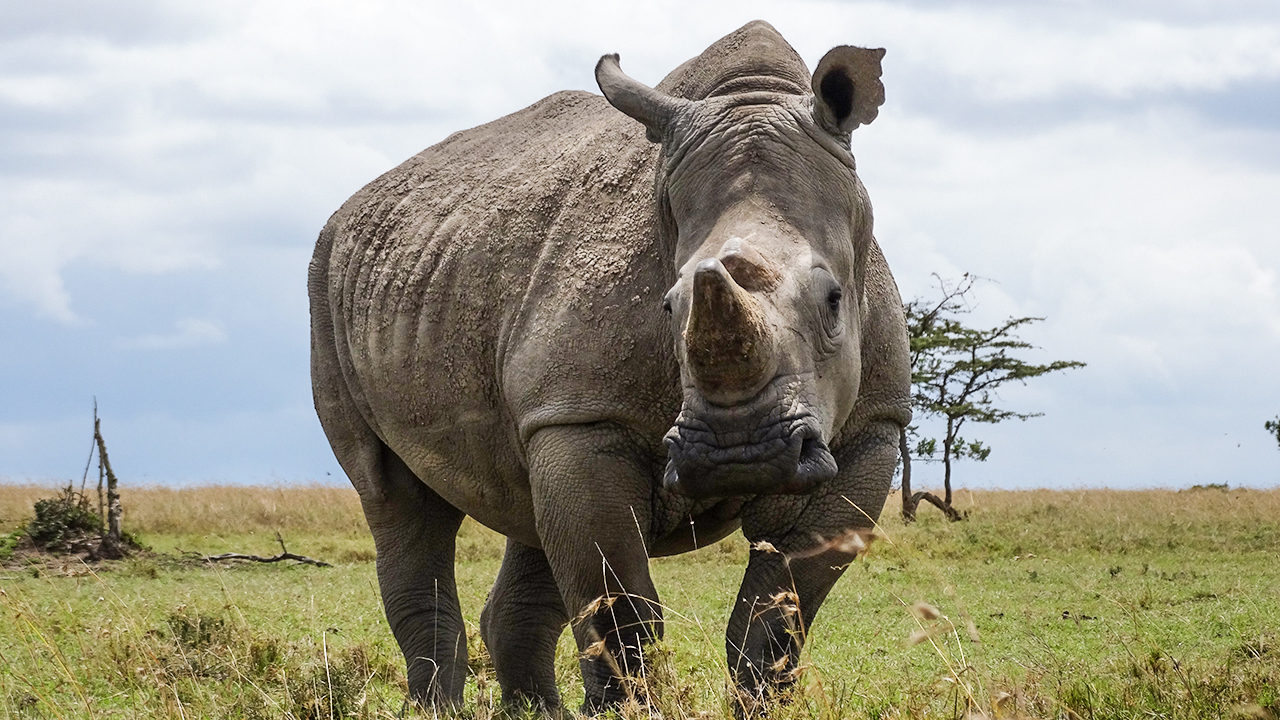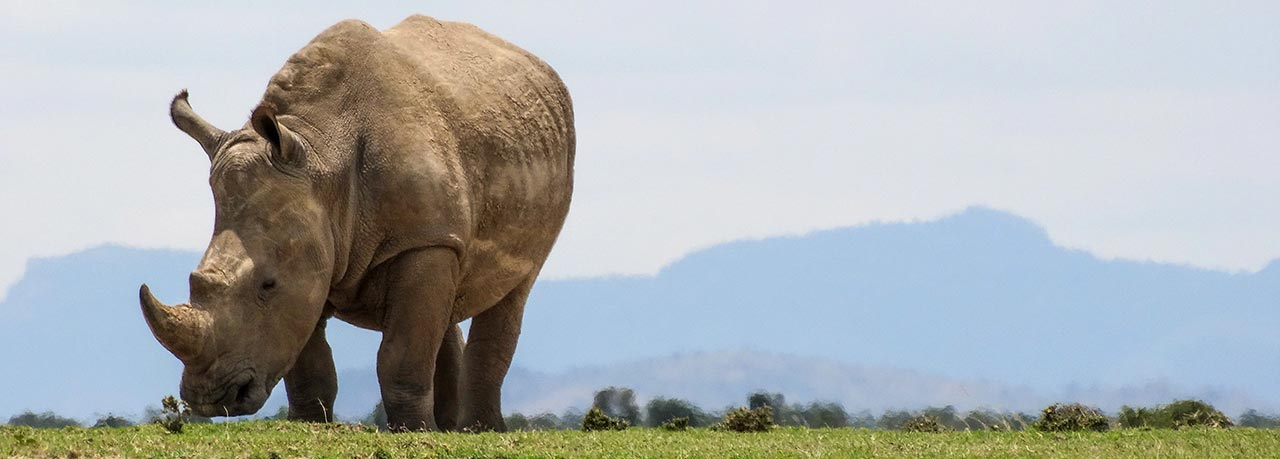Social Structure
Nearly as gregarious as elephants, white rhinos have complex social lives. Females stay with their calves for about three years (until the next calf arrives) and seek out other females for companionship. They form groups of six to 14 individuals. Adult males lead mostly solitary lives, meeting up with females only to breed. Males will share their territory with immature males so long as they remain submissive, but challenge and often fight outsider bulls that trespass on their territory.
Communication
Because they have very poor eyesight, white rhinos rely on both sound (calls, squeaks, snarls, and wails) and scent to communicate. They create middens, or piles of dung, at the borders of their territories. Because the dung is deposited by all of the rhinos in a territory and not just the dominant male, the middens convey information about the number and condition of rhinos in an area.
Behavior
White rhinos alternate between eating and resting during the day and night. They spend the heat of the day in the shade, often wallowing in water when it is available or rolling in dust. These rhinos sometimes gather in groups of as many as 12 individuals. Both males and females have two horns. Males use theirs mainly for establishing dominance or for threat displays, while females use theirs to protect their young. Unlike its black rhino cousin, the white rhino is a grazer and typically moves with its head lowered except when alarmed.
Conservation
More than a century ago, human hunting and habitat destruction drove white rhinos almost to extinction. Dedicated conservation, breeding, and reintroduction efforts have brought their population up to a “near threatened” level. Poaching and habitat loss still threaten their survival. Their horns are valued in traditional Asian medicine and for handles on ceremonial daggers in parts of Africa and the Middle East. Recent conservation efforts include microchipping all the rhinoceroses in Kenya, poisoning or painting their horns, or removing their horns altogether.

